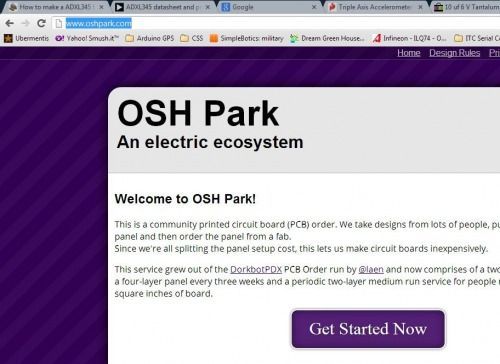I had been looking for a cheap alternative to some of the Arduino Bluetooth devices I’d seen, which in my opinion are overpriced.

Redbear’s Mini: $39.95 (Note: This is a uC and BLE combo).
Redbear’s Uno Shield: $29.95
BLEDuino: $19.95 (if part of Kickstarter)
Bluegiga Shield: $69.95
After seeing these, I thought I’d try to make one; this is my bumbling process for making an Arduino Bluetooth 4.0 device at home:
Updated efforts: http://letsmakerobots.com/node/39795
GitHub: https://github.com/Ladvien/HM-10
Step 1: How to Create an Arduino Compatible Bluetooth 4.0 Module
This guide is intended to show how to interface one of these HM-10 Bluetooth Low Energy modules to an Arduino.
I started working with these little Bluetooth modules in attempt to add Bluetooth 4.0 to my robot projects.
Step 2: Arduino BT 4.0 Module — Overview
There are a few bits of information I’d like to offer upfront. First, I’m a homeless outreach worker; I’m not an engineer of any sort. So, there will be mistakes in my design.
Second, although I was able to interface these BT 4.0 modules with an Arduino, I’ve not fully interfaced them with a PC or mobile device. This is due to the BT 4.0 software stacks being very different than earlier versions of Bluetooth (<3.0).
Still, I’ve shown that is possible to make this bridge using the Lightblue app for iOS.
It’s also one reason I write. I’m too cheap to pay to develop an iOS app to interface with these modules and I don’t own an Android device with BT 4.0. So, I’m hoping someone in the crowd will let me know when they’ve finished the software needed. 🙂
I will state that Jellybean 4.3 offers a Bluetooth 4.0 API.
Now, price is a big concern with me, so I’ll givet the breakdown up front:
The bill-of-materials (BOM):
1.HM-10 x 1
2.BS1138 x 1
3.0603 LEDs x 3 (best if assorted colors)
4.0805 Resistors 10k x 4
5.0805 Resistors 220 x 3
6.(OPTIONAL) SOT-23-5 LDO Voltage Regulator (it doesn’t make sense to use this, but I put the option on the board just in case. I’ll explain).
This should bring your total just under $10 USD. And the boards I purchased from OSHPark, which come out to be less than $2 a piece. Therefore, I figure around $12 for a BT 4.0 module.
I felt this price was better than some of the options available:
Redbear’s Mini: $39.95 (Note: This is a uC and BLE combo).
Redbear’s Uno Shield: $29.95
BLEDuino: $19.95 (if part of Kickstarter)
Bluegiga Shield: $69.95
Step 3: Arduino BT 4.0 Module — Order the Parts
Alright, if I’ve not scared you away then the first thing to do is select a layout.
I designed two different layouts, a Xbee footprint and a full breakout, which will fit nicely into a breadboard.
Xbee ($5.15) for 3 boards.
Breadboard breakout ($6.35) for 3 boards.
Order the components listed
The bill-of-materials (BOM):
1. HM-10 x 1
2. BS1138 x 1
3. 0603 LEDs x 3 (best if assorted colors)
4. 0805 Resistors 10k x 4
5. 0805 Resistors 220 x 3
6. (OPTIONAL) SOT-23-5 LDO Voltage Regulator (it doesn’t make sense to use this, but I put the option on the board just in case. I’ll explain).
The total time on the boards is ~16 days.
Step 4: Arduino BT 4.0 Module — Soldering
A few notes on soldering the SMD pieces:
DON’T BE SCARED. It’s really not that hard.
1. There are three musts to SMD, at least from my perspective: a small iron tip,precision tweezers, thread-like solder (at least .022″ solder wire).
2. Other important soldering tools: A wet sponge and brass-ball will keep your fine soldering tip fine. Sponge the solder tip, then run it through the brass-ball after each component to prevent build-up.
3. To speak blasphemy: Flux is ok, but I find the tweezers often take place of the flux.
4. Practice using both hands during soldering. Tweezers in one and solder-iron in the other.
5. The drag-to-solder method will be what you use on this board.
6. Patience.
7. Have a cup of wine. Alcohol reduces performance on most skills, except, skills that involve fine motor control, there is a marked 20% improvement. Though, this relationship is curve-linear. One glass is good, two glasses and you’ll smoke something.
8. Honor the age old tradition: Don’t solder in your boxers.
Here is a video of me soldering the first iteration of the breakout board.
For more detail: How to Create an Arduino Compatible Bluetooth 4.0 Module

